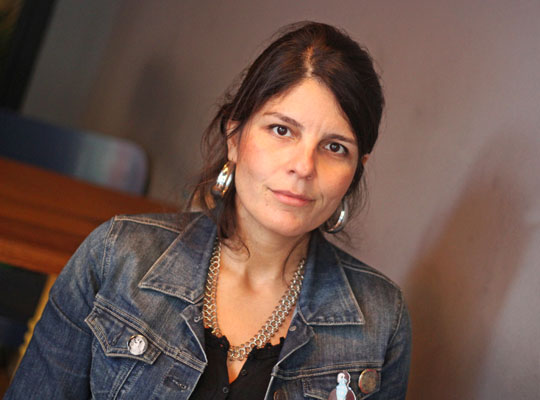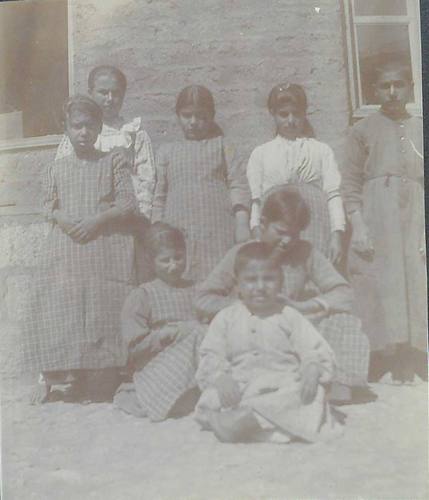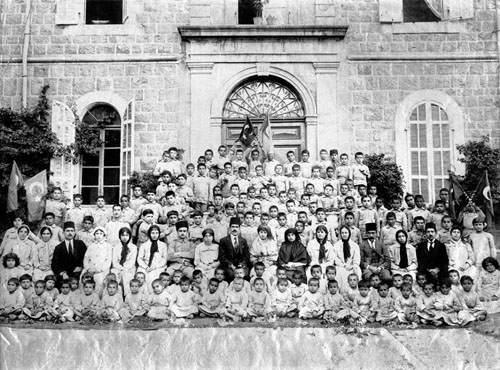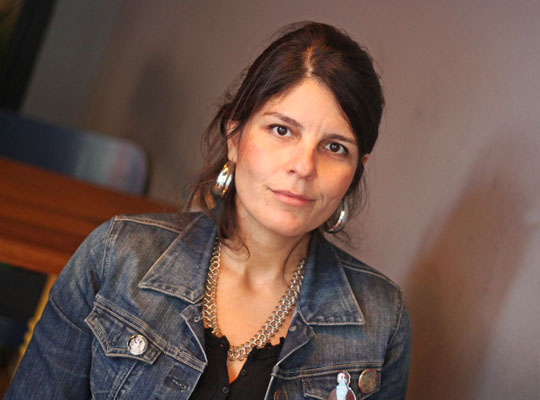Üç büyük katliamın paylaşılamayan mirası: Ermeni yetimler


EMRE CAN DAĞLIOĞLU
[email protected]
-
Konuşmanızda 1894-6, 1909 ve 1915 olmak üzere üç katliamın sebep olduğu üç kuşak Ermeni yetimleri konu ettiniz. Bu yetimler hakkında istatistiksel verilere ulaşabildiniz mi?
Bu konuda istatistik vermek çok zor. 1894-96 Katliamları için 50 bin yetimden söz ediliyor. Buna karşın, ölü sayısının 200-300 bin olduğunu biliyoruz. Dolayısıyla 50 bin sayısı, bazıları için çok fazla, bazıları içinse çok az. 1909 Adana Katliamı için 20-30 bin kişi öldürüldü diye biliyoruz ve yetimhanede olan çocukların sayısı 3 bin 500 civarında. Ancak yetimhanede olmayan çocuklar da var elbette ki. 1915’te ise iş iyice karmaşıklaşıyor. Hayatta kalabilen çocukların 500-600 bin olduğu söyleniyor. Yaş grubu olarak, 17 yaş ve altını çocuk olarak kabul etsem de, katliamlar söz konusu olduğunda o dönemde yetimhanede olanlar genelde 13 yaş altında çocuklar. Çünkü 13 yaşın üzerindeki erkek çocuklar, tehdit olarak kabul edilip öldürülüyor genellikle. Kız çocuklar için de 13 yaş bir sınır gibi görünüyor. 13 yaşından büyük kızlar kaçırılıyor, bu kızlara el konuluyor ya da onlarla evleniliyor.
-
Katliamlarda failin çocuk algısı neye göre değişiyor? Hangi koşullarda tehdit olarak görülüyorlar? Hangi koşullarda korunuyorlar?
Milliyetçilik çerçevesinde yaklaştığımızda anlayamadığımız meselelerden birisi de bu. Daha katı bir ırkçı anlayışla, çocuğun ‘geri dönüş potansiyeli’ dikkate alınarak onların da öldürülmesi gerektiği düşünülüyor. Zira tarihte böyle örnekler de var. Fakat güzel bulunanlar hemen evlere alınmış veya akıllı görülenler evlat edinilmiş. Dolayısıyla bu çocukların başka türlü değerlendirilebileceklerine dair bir algı söz konusu. Misyonerlerde ise şöyle bir bakış açısı söz konusu: “Müslümanların kafası çalışmadığı için akıllı Ermenileri aldılar,” Bu da başka bir ırkçı yaklaşımın ürünü elbette ki… Ama şöyle bir gerçek var ki, eli silah tutabilen biraz daha büyük çocuklar tehdit olarak görülürken, küçük çocuklara öyle bakılmıyor. Tarih Vakfı’ndaki konuşmamda Güven Gürkan Öztan da söyledi, 1920’lerde ise durum farklılaşıyor. 1927’de “Köprü altında serserilik eden çocuklar, bizden olamaz; kesinlikle Ermeni dölüdür” minvalinde bir tartışma var. Farklı bir ayrıştırma mevcut artık, çocuklara milli kimlik biçiliyor. İmparatorluk döneminde ise güzel ve akıllılarsa her şeye dönüştürülebilirler gibi bir bakış açısı var ki, o yüzden bu yetimler paylaşılamıyor o dönemde. Amerikalılar da, Patrikhane de, devlet de bu çocukları “kurtarmak” istiyor.
-
Bunun nedeni ne sizce?
Bu nokta benim için bir muamma. Konuşmamda da söyledim. Çoğu hasta ve bitkin bu çocukların. Bunun yanı sıra, kurtarmak isteyen herkes de fakir ve yorgun. Bugün İstanbul’da binlerce Suriyeli çocuğu kimse böyle bir motivasyonla sahiplenmeye çalışmıyor. Neden olduğunu gerçekten çözemiyorum. Her ne kadar Amerikalıların, Ermenilerin güzel ve akıllı olduğu tezini saçma bulsam da, o dönemde böyle bir algı olabileceğini de düşünmüyor değilim.
|
Harput, 1910. Resmin arkasında büyük ihtimalle misyoner Maria Jacobsen tarafından yazılan not: ‘Arapgir’den getirdiğim 8 zavallı çocuk. Küçük Vartuhi’nin el ve ayak parmakları eksik, üç tanesi kör, diğerleri sakat.’ © KMA Arşivleri, Danimarka |
-
1894-96 Katliamları ve 1909 Adana Katliamı yaşanırken, bir yandan da Osmanlı’da bir modernleşme hamlesi sürüyor. Bu modernleşme hareketi içerisinde bu çocuklara biçilen rol nedir?
Aslında bu algı içerisinde çocuklara biçilen rol, yetimlerin siyaseten neden önemli olduğunu açıklıyor. Merkezileşme öncesinde devletin ciddiye almadığı kadınlar, çocuklar veya hastalar gibi gruplar, modernleşme sonrasında kontrol altında tutulmaya çalışılıyorlar. Nüfus kaygısıyla yönetiliyor modern devlet. Bu devletin güçlenme süreci de II. Abdülhamid dönemiyle hızlanıyor ve bu hızla sürmeye devam ediyor. Dolayısıyla devlet, çocukları muhatap almaya başlıyor. Bu sebeple 1897’de sokaklardan terk edilmiş çocukları toplayan Darülaceze gibi bir kurum ortaya çıkıyor. Cemaatlerin de bunu kendi nüfuz alanlarına müdahale gibi görmeleri ortaya çıkıyor. Bir yandan da, milliyetçilik diyebileceğimiz kimliğe daha ağır referans veren özellikler sorun olmaya başlıyor. Devletin çocuklar için çalışma yürütmesine bu anlamda olumlu bir anlam yüklenmiyor. Jön Türkler döneminde de yükselen Osmanlıcılık akımına bakış açısına göre değişiyor bu anlam. Yani Osmanlıcılık, herkesin farklılıklarını bir kenara koyup Türkçe konuşması mı, yoksa herkesin farklılıklarını koruması mı? Cemal Paşa’ya göre herkesin Türkçe öğrenmesi gerekir ve bu yüzden yetimhanede Türkçe öğretilmesi zorunlu hale getiriliyor. Diğer yandan ise bu, cemaat kimliğinin kaybolmasını beraberinde getiriyor. Yetimlerin paylaşımı üzerine tartışmanın çıkış noktası biraz da bu.
-
Bahsettiğiniz üç kuşak yetim arasında ne gibi benzerlikler var?
Bahsettiğim gibi aktörler arasında paylaşılamamak bu üç kuşağın da ortak kaderi. 1894-96’da Abdülhamid rejimi bir yerden çekiyor, misyonerler başka bir yerden çekiyor yetimleri. 1909’da bu sefer Jön Türk rejimi sahiplenmeye çalışıyor çocukları. Dönemin Adana Valisi Cemal Paşa, çocukların bakımını üstlenmeye çalışırken, Patrikhane adına Zabel Yesayan bununla savaşmak zorunda kalıyor. 1915’te de neredeyse tüm devlet yetkilileri birer evlatlık alıyor ve 1919’da Patrikhane, bu çocukları toplamaya çalışıyor. Diğer bir benzerlik de, onlara yönelik köksüzleştirme çabasında görülüyor. Kimliğin dil ve din üzerinden belirlendiği bir dünyada, bunu kaybetme tehlikesi yaşıyorlar. II. Abdülhamid dönemindeki yetimlerin neredeyse yüzde 85’ine Amerikalı misyonerler bakıyor ve yaklaşık yüzde 80’i Protestan oluyorlar. Adana Katliamı sonrasında yetimhanede kalan çocukların hiçbiri Ermenice öğrenmiyor ve din eğitimleri de oldukça şüpheli. 1915’ten sonra da sayısını bilmediğimiz kadar fazla çocuk, evlatlık alınıyor ve Müslümanlaştırılıyor. Bir de, katliam yetimlerinin anılarından bildiğimiz üzere, şimdiki algımızla bir çocuktan beklenmeyecek irade gösteriyorlar. Evlatlık alınmış olsalar bile, orada duramayıp fırsat bulunca kaçıyorlar. Bugün vapura tek başına binemeyen çocukları görürken, o günlerde Adana’dan Sivas’a ailesini bulmaya tek başına giden çocukları okuyoruz.
-
Peki, bu yetimler için kurulan yetimhanelerin köksüzleştirme politikasına karşı, bir köke bağlama misyonu var mı?
Aslında devlet politikaları tartışmasında, özellikle 20. yüzyılda yetimhanelerin tamamen yanlış kurumlar olduğu düşünülüyor. Çok sağlıksız bir yöntem olduğu ve doğru olanın evlat edinme olduğu söyleniyor. Yine de kurumsal çözümlerin daha ilerici olduğu görüşü hâkim. Yetimhanelerin kimlik üzerindeki etkisi de aynı şekilde tartışmalı. Amerikan yetimhaneleri, katı bir endoktrinasyonla çocukları Protestan olarak yetiştirme görevini başarıyla yerine getiriyor. Bu yüzden, 1890’lar boyunca Patrikhane’ye şikâyetler yağıyor; misyonerler, çocukları kiliseye getirmiyor veya haç çıkaran çocuklarla dalga geçiyorlar diye. 1915 sonrasında Cemal Paşa’nın Halide Edip’le kurduğu Ayn Tura Yetimhanesi de, Amerikalılar kadar kaynağı olmasa da onların yaptığının bir benzerini yapmaya çalışıyor ve çocukları Türkleştirmeye çalışıyorlar.
-
Etnik mühendislik bağlamında yetim bırakmak, aktif olarak kullanılacak bir yöntem olarak mı görülüyor?
Ulus-devlet fikri ve Wilson İlkeleri bağlamında, çoğunluk olmanın önemli olduğu ve nüfusun gerçek anlamda bir zenginlik olduğu dönemden söz ediyoruz. Bu bağlamda, çocukları dönüştürme potansiyeli önem kazanıyor. Dolayısıyla Ermenileri azaltırken Müslümanları çoğaltmak, makul gelebilecek bir fikir. Çocukları öldürmemek, Ermeni olarak bırakmak anlamına gelmiyor. Ancak bu, ne kadar hesaplanıyor bilemiyoruz. Çünkü giden emirlerde, çocukları öldürmeyin diye bir ifade yok. Yetimhaneye koyun veya evlere dağıtın deniyor, ancak öldürmeyin diye kesin bir emir verilmiyor.
|
|
“Çocuğa sahip çıkarak mülklerin üzerine konmak o kadar kolay değildi’
-
Soykırımda yetim kalan çocukların kurtarılması üzerinden yapılan bir kahramanlık anlatısı da var. Özellikle 1915’te aileden kalan mirası ele geçirme yollarından birisi, bu yetimlere sahip çıkmak. Kahramanlık anlatısı ve ekonomik sebeplerle sahip çıkmak ne kadar ilişkili?
O dönemde evlat edinme çok yaygın bir pratik aslında. Çünkü bu çocuklar emek gerektiren işlerde işe yarıyor. Ekonomik saiklerle çocuklara sahip çıkmak da açıklama adına bir fikir elbette ki. Ama genellikle devletin el koyduğu mülklerden bahsediyoruz. Dolayısıyla çocuğa sahip çıkarak bu mülklerin üzerine konmak o kadar kolay değildi. Mardin’de böyle bir örnek gördüm. Komşu, çocuğa sahip çıkarak eve de el koyuyor. Ancak bu, genele dair ne kadar açıklayıcıdır, bilemiyorum. Çocuğa sahip çıkmayı gerçekten iyilikten dolayı yapanlara da birçok örnek var.


 Ayn Tura Yetimhanesi - Ortada Müdire Halide Edip Hanım ve eğitim kadrosu, etraflarında kız ve erkek yetimler (1918) © AGBU
Ayn Tura Yetimhanesi - Ortada Müdire Halide Edip Hanım ve eğitim kadrosu, etraflarında kız ve erkek yetimler (1918) © AGBU

